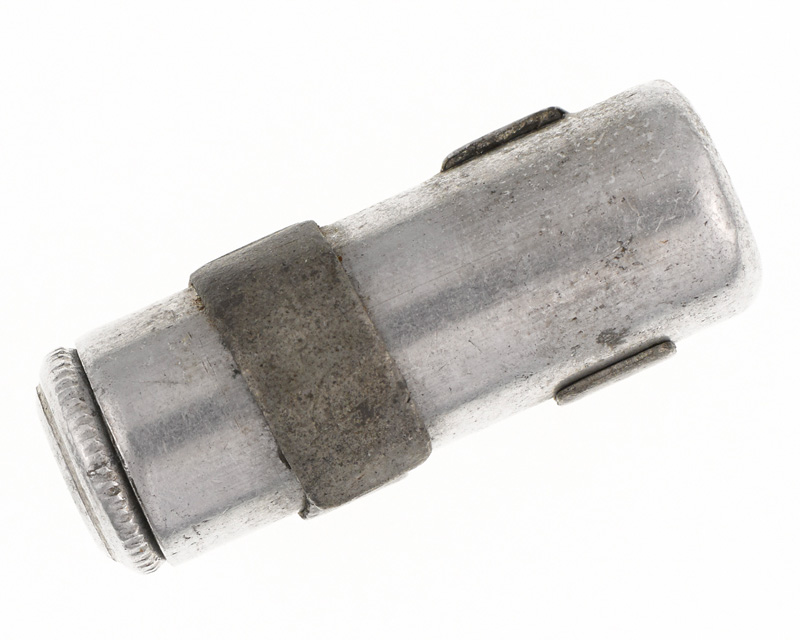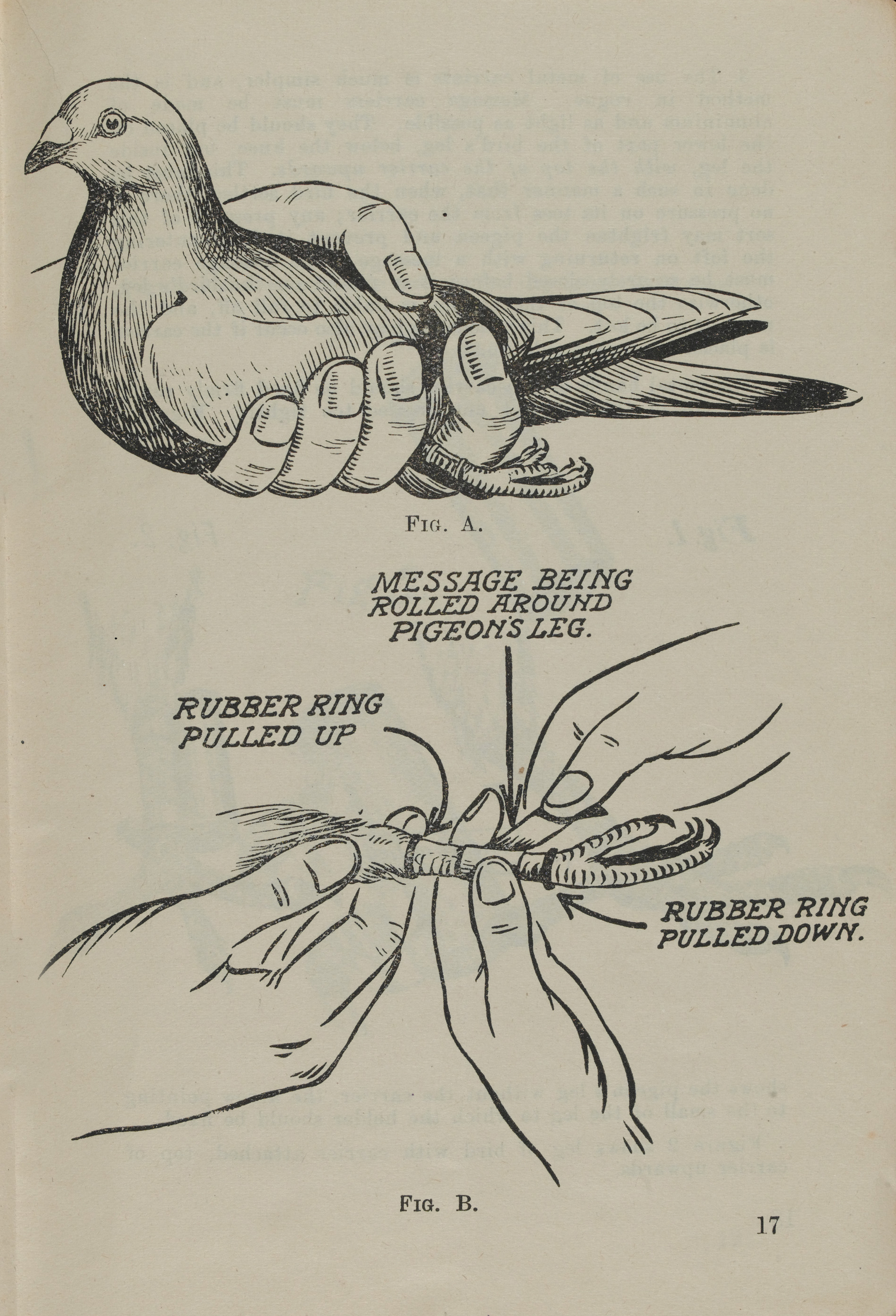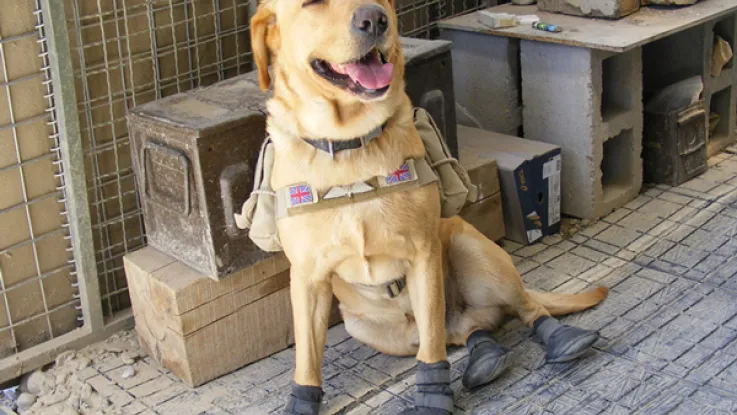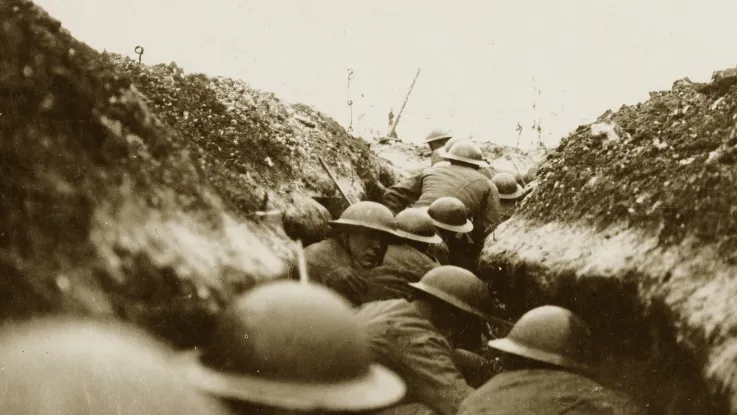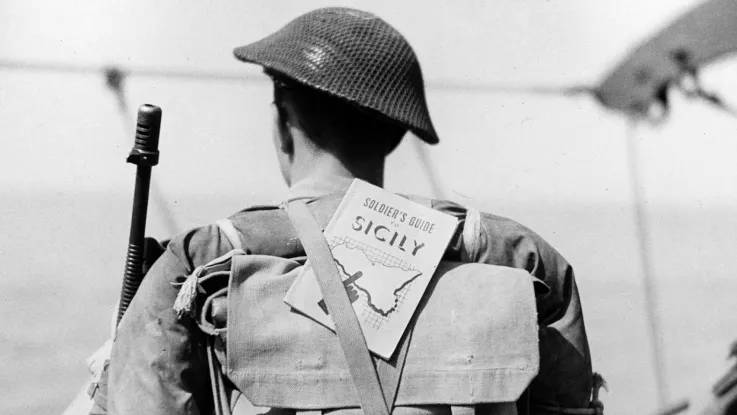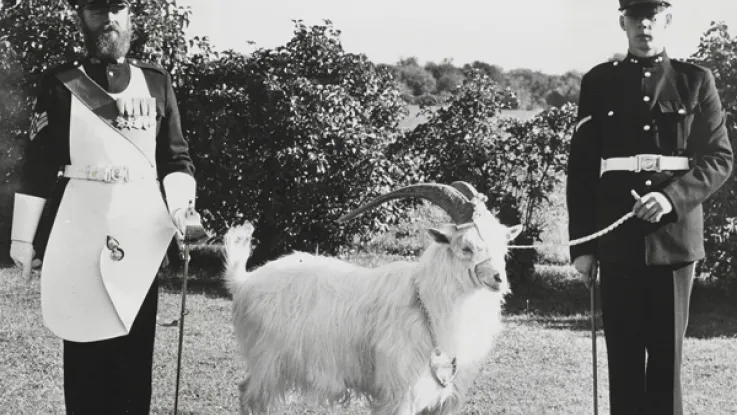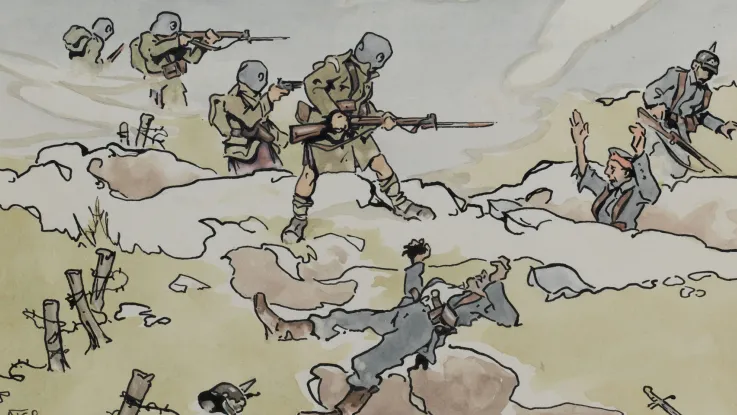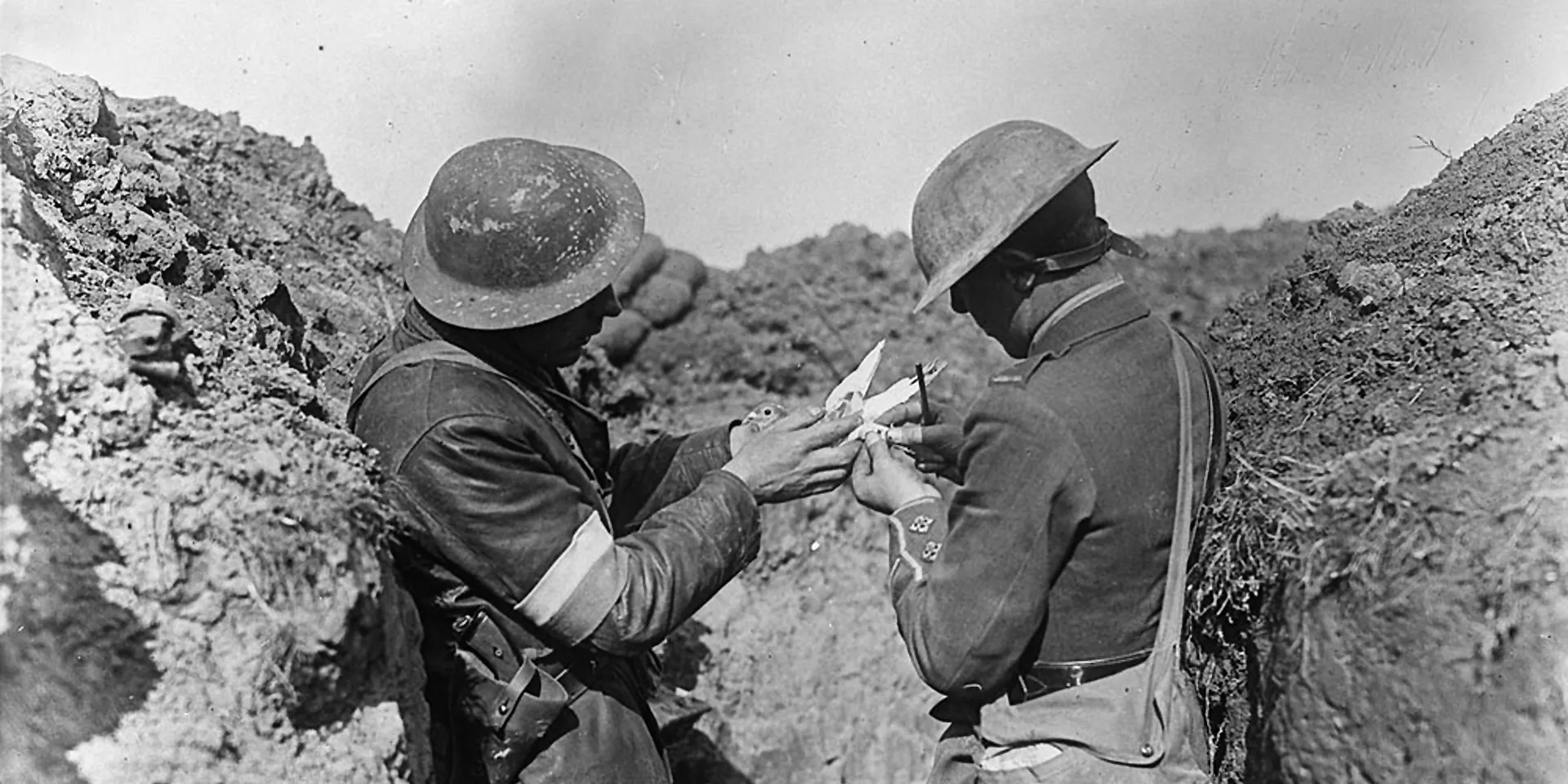
HM Pigeon Service fixing a message to a bird before leaving a trench, 1917
Disruption on the line
Communication was a major challenge for the British Army during the First World War (1914-18). Human runners and messenger dogs were vulnerable to enemy fire, and telephone lines could be destroyed in shell blasts.
Radio communication was still in its infancy. Early wireless sets were bulky, immobile and unreliable, and their messages were easily intercepted. It was only in 1917 that reliable sets became widely available for use in the trenches.
Pigeon power
Pigeons were found to be the most reliable way of sending coded messages from the front. With a maximum speed of 60 miles per hour, the birds could quickly fly up and out of range of sniper fire.
However, this form of communication was not without its own drawbacks. Pigeons could not be used after dark and they were also susceptible to gas. Casualties were fairly high, with around 10 per cent of the birds employed during the Battle of Messines (1917) falling foul of the enemy.
Pigeons were more reliable than any other form of communication. Ninety-five per cent of messages sent by pigeon were received.
The Army used around 12,000 pigeons during the Battle of the Somme (1916). By the end of the war, it had a force of 20,000 birds and 380 handlers.
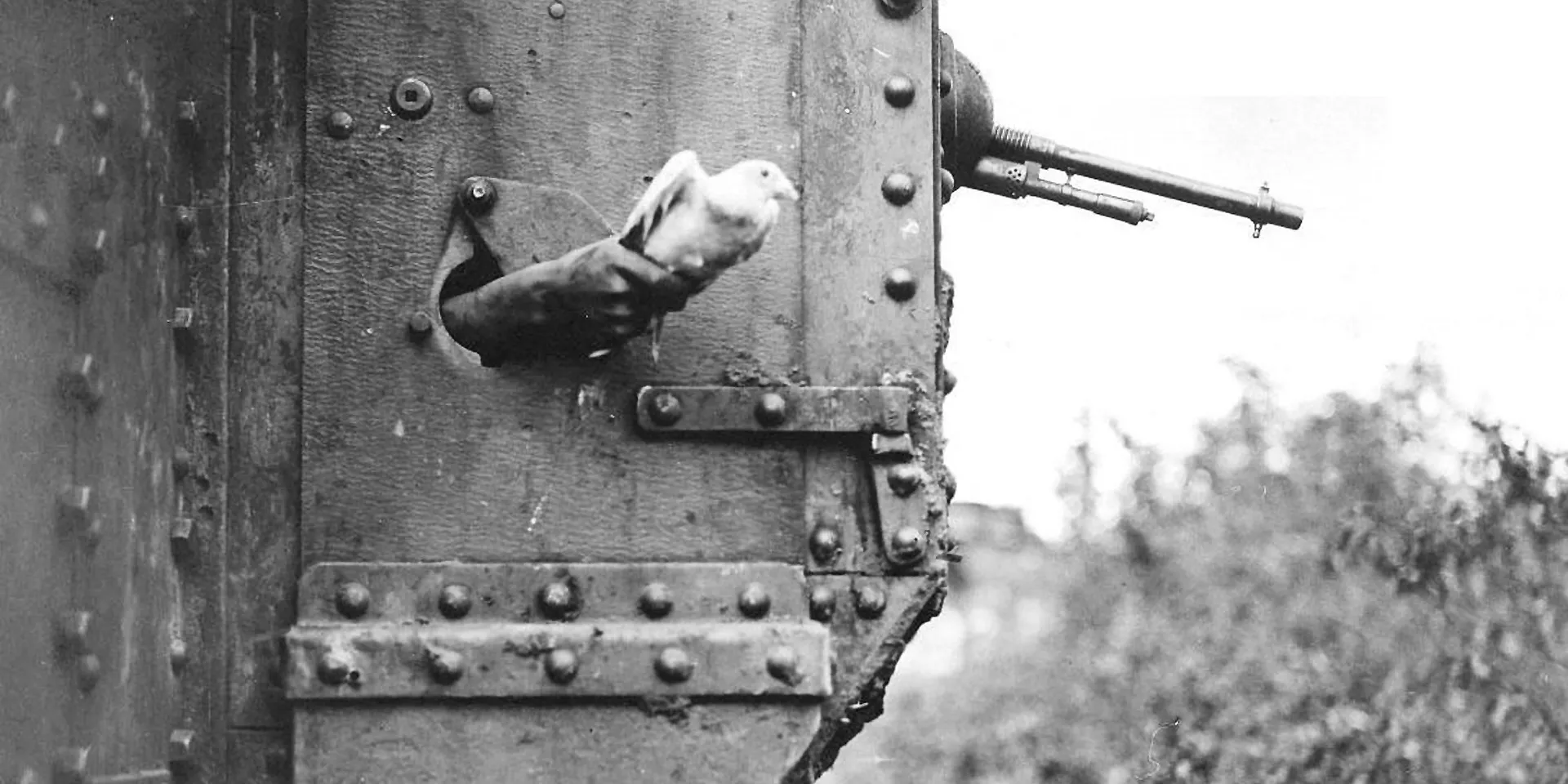
A messenger pigeon being released from a British tank, 1918 (© IWM (Q 9247))
A fully fledged service
The Army continued to use messenger pigeons in the Second World War, even sending them across the Channel to carry messages back to Britain on D-Day in June 1944.
Right up until 1950, the British Armed Forces paid civilian pigeon fanciers to maintain 100 birds for their use.
Some military groups still use pigeons today. In 2016, it was reported that Islamic State fighters were using the birds to carry messages.

